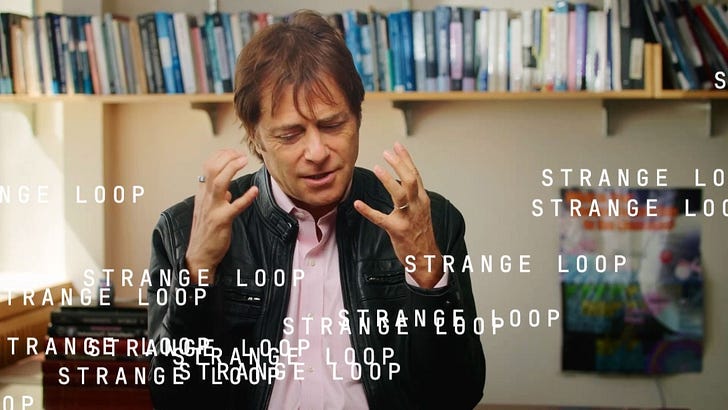Dear Chris,
TL;DR
Recap: This is part 13 of 15 essays about applying for funding to develop a Theory of Human Values, resolve Alignment, avoid AI-fueled power concentration.
To resolve these challenges, we need a Deep Praxis - a process of enacting and embodying ideas and theory as rich as the purposes and context of the praxis.
We will evaluate an emerging praxis against many criteria, e.g., Learning, Transformation, Values, Complexity, Wisdom.
To design a project that generates a Deep Praxis we need, I propose 4 types of work to match with one or more of 10 different areas of research.
Surprise!
RECAP
The Future of Life Institute says we must reimagine the world. They set up a grants program to support projects that increase human agency and avoid AI-fueled power concentration. I’m applying for a grant.
In previous essays, I describe how we have reimagined the world in the past and how we can do it again. I propose three theoretical foundations for a values-oriented perception of reality and a portfolio of projects to get us there.
The project I am proposing to FLI? Well, let’s see…to recap. All we want to do is:
Reimagine the world
Distribute AI-fueled power equitably
Resolve alignment
Honor human agency and well-being
Create a values-oriented perception of reality and a future we want
Reimagining and recreating the world will is a big deal. It will take some time. The project I propose to FLI must be compact, quick, tight, powerful. A well-placed act. Preparation for what may come next.
Like one stroke in a 5-set French Open Final. Let the project I propose be Rafa’s cross-court forehand.
CREATE A DEEP PRAXIS
A Deep Praxis is a process of enacting and embodying ideas and theory as rich as the purposes and context of the praxis. It is critical, creative, evaluative, systemic, systematic, ecological, adaptive, purposively transformative.
Reminder: The Nhà is the accelerating co-evolution of Nature-Human-AI. The Nhà is our Home. But no one has ever been here before. We are getting lost. We need a praxis for our Home. We need a Deep Praxis to navigate the Nhà. We need a praxis fit for resolving alignment, avoiding AI-fueled power concentration, generating human well-being and agency.
My proposal to the Future of Life Institute?
Generate a Deep Praxis.
Create a process. Coherent. Connected. Living. Co-evolving with everything around it, of it, in it. All of the work, the people, the planning, ideas, projects, events, crises, resolutions. Everything.
We need a Deep Praxis that enables and nourishes values, community, culture. Whatever is required for the one stroke. The perception, anticipation, movement before. The pause, the stroke, the fight after. 1
To generate the Deep Praxis we need, we must work. Stroke after stroke. Point after point. Game after game.
From the work, our praxis emerges.
CRITERIA FOR THE PRAXIS WE NEED
How will we know if it is the praxis we need? How will we recognize one that is well-matched to our context and purpose?2
Three features of a praxis influence its quality, worth, significance:3
Dualities baby. Less Dualisms. More both/and. Less either/or. Making everything a choice between yes-no, in-out, black-white, 0-1 is so non-Nhà.
Learn like you mean it. Understand how the type and ways of learning relate to the values driving the curiosity, work, progress. 4
Eye of the Tiger.5 A fit praxis stays the course. The praxis we need continually reorients itself toward purposive transformation.
In the same paper about the 3 features of a useful praxis, The Silwood Group describes 4 principles of a praxis for biodiversity conservation.6
Because Conservation of Life is crucial to creating a future we want in the Nhà,7 we can use these 4 principles to assess our emerging deep praxis.
Attend to the whole with humility
We are talking about the Nhà. It’s open. High dimension. Non-linear. Dynamical. Living. Tangled. Wicked. Evolving at an accelerating rate. Assume influential unexamined assumptions and biases everywhere.
Don’t miss the forest for the trees. Or the trees for the forest. Or the soil. The significance is in the relationships of the parts, the whole, the mycorrhizal networks. The science we have is not the only kind. The knowledge we recognize is the edge our our ignorance. No one has done this before. No one knows what to do. We must do to know. Plan accordingly.
Is there anyone that knows everything? Nhà.
Engage generatively with the values, cultures, politics, histories, memories
An understanding of human values - the most powerful force on Earth and a purpose of the galaxy - is between ourselves and other. We will find the future we want in our relationships where there is no limit to abundance or ignorance.
For the praxis we need will grow from the tangled and living networks of perspectives we’ve sown with Nature. For our praxis to germinate, we will work the webs of understandings into our living like we turn nourishment into the soil we prepare for the seed. With our hands deep we will nurture the life and decay. We will breath patterns of energy into a microbial galaxy that organizes the atoms of our praxis. After many seasons, we will perceive the world from the penumbra of our maturing praxis to see our memory and what our history could be.
Learn through evaluative, systemic inquiry
Our Home is built of energy. The perpetual, rising, raging flows of information. Organizing, mostly unconsciously, according to a human values-oriented perception of reality that melts subjective experience into objective reality.
With intentional systematic and systemic iterative inquiry and action we can bound the patterns or information we perceive and name and use what we learn for a more purposeful evolution.
Imbue all learning with honesty, trust, clarity. Describe every perspective.10
Exercise wisdom in judgment and action
Let us bound our perception of our relationships with Nature as wisely as Nature has bound its relationships with reality.
Let us honor Humanity’s most precious values by building our knowledge with all the ways we perceive so that our understanding may flourish.
I like EF Schumacher’s 4 fields of knowledge as a beginning to a conversation about wisdom. Roughly the fields are knowledge of Self, Other, Nature, How Others perceive Self. I add another field - by far the most expansive and dynamic - knowledge of the relationships between and within the other fields. To understand the evolution of our wisdom, the praxis we need may relate and assess every aspect of purpose and context11 to the fields of knowledge.12
Wisdom grows from the past. The future is fruit. How will it taste?
A PROJECT FOR THE PRAXIS WE NEED
Where will the praxis begin to grow? How does it begin?
Chris, or anyone, if you’ve read this far then we’ve already begun.
But which project will we begin with?
Naming a project to do matters a whole lot if I want FLI to give us any money to do anything. Beyond that I doubt it matters too much.
Starting points are important.13 Specificity about the characteristics of starting points. A long conversation over dinner with the right people, healthfully interacting values, shared and complimentary intentions may be a more powerful beginning than a huge round of funding, lots of hires, launching an app.14
I’m just one person. The Nhà is chockablock with massively tangled expanding challenges for our species. The question of “what project” is a conversation for first conversations and begins our Deep Praxis Quest.
But because I must say something about “the project”, the work, here goes.
Assuming that the criteria described above are a starting point, what work seems likely to generate a Deep Praxis we need?
I notice four types of projects of the bat. Perhaps one is best. Maybe a combination.15
Conversation. A series of directional facilitated fun gatherings - meetings, conferences, seminars, parties. Traditional style, long walks, dinners, at homes, travel, in the park, crashing other people’s conferences/meetings/offices.
Games. Strategic wargaming. Hackathons. Serious games. Jane McGonigal’s “Imaginable.” 16
Planning and Testing. Team, advisory groups, AIs, colleagues develop plans to launch the proposed portfolio of projects and begin testing theory. Backcasting. Horizon scanning. 1718
Attention. “Big Think” style video and text describe and promote to target audiences the significance of our perception of reality, why human values require more attention in the Nhà, why it is hard and what it may mean to reimagine the world, how anyone can and must do it. 19
Whichever type of project is chosen, it needs a purpose and context to match the praxis we need to create. One starting point: direct inquiry at Power Concentration, Alignment and Moral Coherence, Theory of Human Values, Values information. Another: focus inquiry on one or more of the ten research topics I’ve proposed in earlier essays.20 21
Here are five of those research topics and a few starter questions:
Inventory of human values.22
What is the total list of all Human values?
Who has created these lists? How did they do it?
What are all examples of natural inventories of Human Values?
Inventory of representations of values.
What is the total list of all representations, things to which humans have assigned values?
In what ways might representations be perceived? What affects how they are perceived?
Inventory of patterns.
What is the total list of all patterns?
In what contexts are patterns perceived? Not? How?
What are the characteristics of diverse patterns?
Bounding.
How do/could we bound values, representations, patterns, agents?
What are the different types of boundaries?
How do/could we assess changes in boundaries?
Matching. Connecting values, representations, patterns, agents.
What values have been assigned to which representations?
Who assigns which values to which representations?
Which patterns are associated with which representations? With which values?
SURPRISE, AS USUAL
Chris! Now what?
Now I’ve got to take all 13 of these essays and jam them into a funding application.
Will any of it result in more meaningful human agency and less AI-fueled power concentration?
Dunno. Perhaps I can use the ideas to stir up some other kind of support or partnership. Maybe an entrepreneurial sort sees something.
Kinda shocked. Don’t get the implications of this yet, quite. But writing this series made two things clear:
We must describe the ecology of the Nhà if we are to understand and meaningfully influence it.
To describe and understand the Nhà each individual and Humanity must possess and understand their identity.
Two requirements for navigating the Nhà and creating a future of well-being for all.
Surprise!
{NOTE! Chris, I submitted the proposal by the midnight deadline on Oct 31! It meant a couple of all-nighters and missing some trick-or-treating with the gals but I scare easily anyway. The only CV I had was one you helped me put together in 2017! Oh well, my LinkedIn is up’ish to date. But I did it! That is not nothing. You miss 100% of the shots you don’t take and all that. Next I can clean up the proposal - I have a few drawings now - and shop a better version around to other folks who believe that the start of this journey has a lot to do with where we all end up. We shall see. Peace.}
The praxis enables whatever happens before the project, the project itself, and everything after. In other words, the deep praxis is already at work now.
I realize it sounds odd to discuss the criteria by which we assess an emerging praxis BEFORE we name the specific work to be done. But if we can, we must. Thinking evaluatively, considering criteria by which we evaluate a deep praxis, at this stage, BEFORE beginning the project work, may improve the germination rates and yields of our praxis. Too often, building the project first affects how we think about evaluating it. Applying evaluative thinking at this stage sets conditions and direction for project design. It facilitates convos about goals, intentions, expectations. Getting to work asap is important. But we risk going fast in the wrong direction with catastrophic consequences. Wiley Coyote.
I co-founded The Silwood Group and facilitated/led our work to create this paper generally describing our perspective. https://research.monash.edu/files/289415003/264091108_oa.pdf
I like Murphy’s “Extended Mind” to explore many different ways to learn.
The thoughts about the principles are my own.
not all agree.
EM Forster, Howards End
You’ll notice I didn’t mention university professors, software engineers, coders, computer scientists, physicists, VCs. I am sure I love all of these folks. And they are already involved and seem to be leading most efforts. We are lucky to have super smart peeps on the case. But that’s not enough.
Nurturing a praxis fit for doing all of this work, and generating a new values-oriented perspective of reality along the way, will require massively diverse informed perspectives. Many will be surprised that their perspective is significant…or not. Every human will eventually have to participate.
a few perspectives that may be critical to creating the praxis we need: disciplines across the complexity sciences, Art, Human Systems Dynamics, evaluative thinking, systems thinking, visioning/futuring, philosophy. The Silwood Group describes many relevant methods and perspectives. The Adaptive Action (from Human Systems Dynamics) and Cynefin (Snowden) Frameworks may be particularly useful in guiding and documenting the emergence of the Deep Praxis this project intends to generate.
I co-founded The Silwood Group and facilitated/led our work to create this paper generally describing our perspective. https://research.monash.edu/files/289415003/264091108_oa.pdf
And Parsons and Winters review and propose important perspectives https://pdfs.semanticscholar.org/cf39/3a9c1547d14f7b4a0666cb27d30343d06709.pdf
Could be everything I suppose: a starting list…actions, judgment, representations, values, outcomes, vision
The “judgement” part of this might be sorts of incremental continual evaluative impact assessments layering upon each other within the deep praxis quests generating the feedback (ie filling in the picture) needed about usefulness, application, adaptation of a given project or action.
Critical. What’s the baseline? How will we know what’s changed and how much and in what directions and how fast and…My buddy Cam just wrote something about this
Meadows Leverage Points. Numbers are the weakest place to intervene. Information flows, goals, paradigms are more powerful leverage points.
Not sure but they should happen wherever and in whatever way we can gather the relevant perspectives and engender the creative productivity necessary to reimagine the world.
If gameplay were a common method for learning in this work,
How could games, eg wargames, be used to explore the creation of a Values Layer of information, Human-AI communication and use of Values Signatures, the relationship between the existence of a Values Layer and Signatures and avoiding AI-fueled power concentration? Effects of Human agency and identity on various economic models?
How could Hackathons or prizes/bounties be used to make rapid progress on well-defined components within the portfolio of projects?
Learning about each and all of the projects. The balance and design of understanding, relationships, expertise, testing grounds. Begin with long lists of questions and so begin creating the praxis. What is possible with each project? What questions do we need to be asking? Are there already answers? Why not? What is wrong? Possible? Missing? Who do we need? How will we allocate resources? Which projects may have the greatest impact on purpose first, with least effort?
Design. Rather than haphazard willy nilly just get started we are willy nilly just getting started but with an explicit evaluative and design thinking orientation. Evaluation in everything. Information flows, feedback, adaption, like Nature. Funny that AI will do most of this. Deep Praxis Quest is designed so each step generates relevant learning through iterative inquiry and action. Like our homeschooling (I swear I know what I’m doing! I’m only screwing them up a little)
Want to grow the community of collaborators? So much diversity is required, expertise, energy, kindness, love, generosity, passion. We need it all. We must design to be open and welcoming. I would love to try to communicate. https://www.youtube.com/user/bigthink
Humanity is grappling with unprecedented challenges. No one knows what to do. Not in a definitive sense of resolving all we aim to. We must do to know. Co-evolve with our purposes and context. Adaptive action and evaluative thinking are great for this. Evaluative thinking—the combination of critical thinking, creative thinking, inferential thinking, and practical thinking—can be used in complex systems to, for instance, craft contextually specific approaches to using fit-for-purpose questions that generate reasoned, evidence-based judgements about value (Vo and Archibald 2018)
A few more project ideas:
Values Theory, Values Layer, Values Signatures
Why are these wrong? Why are they right?
How much more work needs to go into conceptualizing these?
Who should be involved?
Management
How much of this work can AIs do now? Next year?
What are options for AIs assisting, guiding or leading day to day management and longer-term planning?
What is an appropriate management structure?
Community, Culture, Values
What is the values signature of the community? Of a given project?
What do we notice about the values and the culture?
What is the relationship between various projects and the community?





